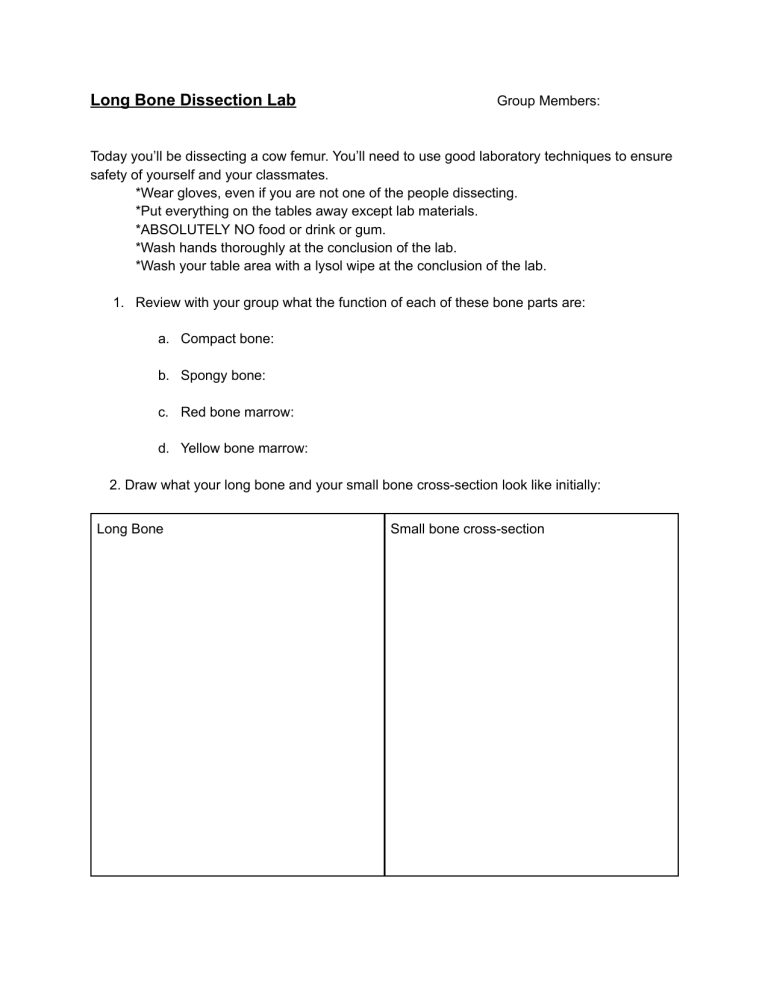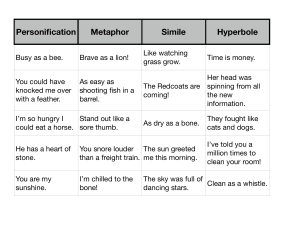
Long Bone Dissection Lab Group Members: Today you’ll be dissecting a cow femur. You’ll need to use good laboratory techniques to ensure safety of yourself and your classmates. *Wear gloves, even if you are not one of the people dissecting. *Put everything on the tables away except lab materials. *ABSOLUTELY NO food or drink or gum. *Wash hands thoroughly at the conclusion of the lab. *Wash your table area with a lysol wipe at the conclusion of the lab. 1. Review with your group what the function of each of these bone parts are: a. Compact bone: b. Spongy bone: c. Red bone marrow: d. Yellow bone marrow: 2. Draw what your long bone and your small bone cross-section look like initially: Long Bone Small bone cross-section 3. Locate where the compact bone is found. Describe what compact bone is like here: 4. Locate the spongy bone. Inside spongy bone is where red blood cells are formed. What does it feel like? Draw a close-up view of what spongy bone looks like: 5. Where is most of the red bone marrow and spongy bone located? 6. Yellow bone marrow is often described as having a butter-like texture. What is it made of that is also similar to butter? 7. Remove the yellow marrow carefully, trying to remove it all in one piece if possible. 8. Try to locate the artery that goes the length of the femur bone and is inside the yellow marrow of the long bone. Try to remove it from the the marrow to observe it if you can. How does it look? Draw it here: 9. On the short bone cross-section, can you see where the artery was? Try to locate the artery’s location. 10. Does your sample have any muscle tissue attached to the bone? Investigate how it is connected. (Hint: there is something between the bone and the muscle tissue. What is it?) 11. State 3 facts you learned while dissecting these bones (using complete sentences!)



